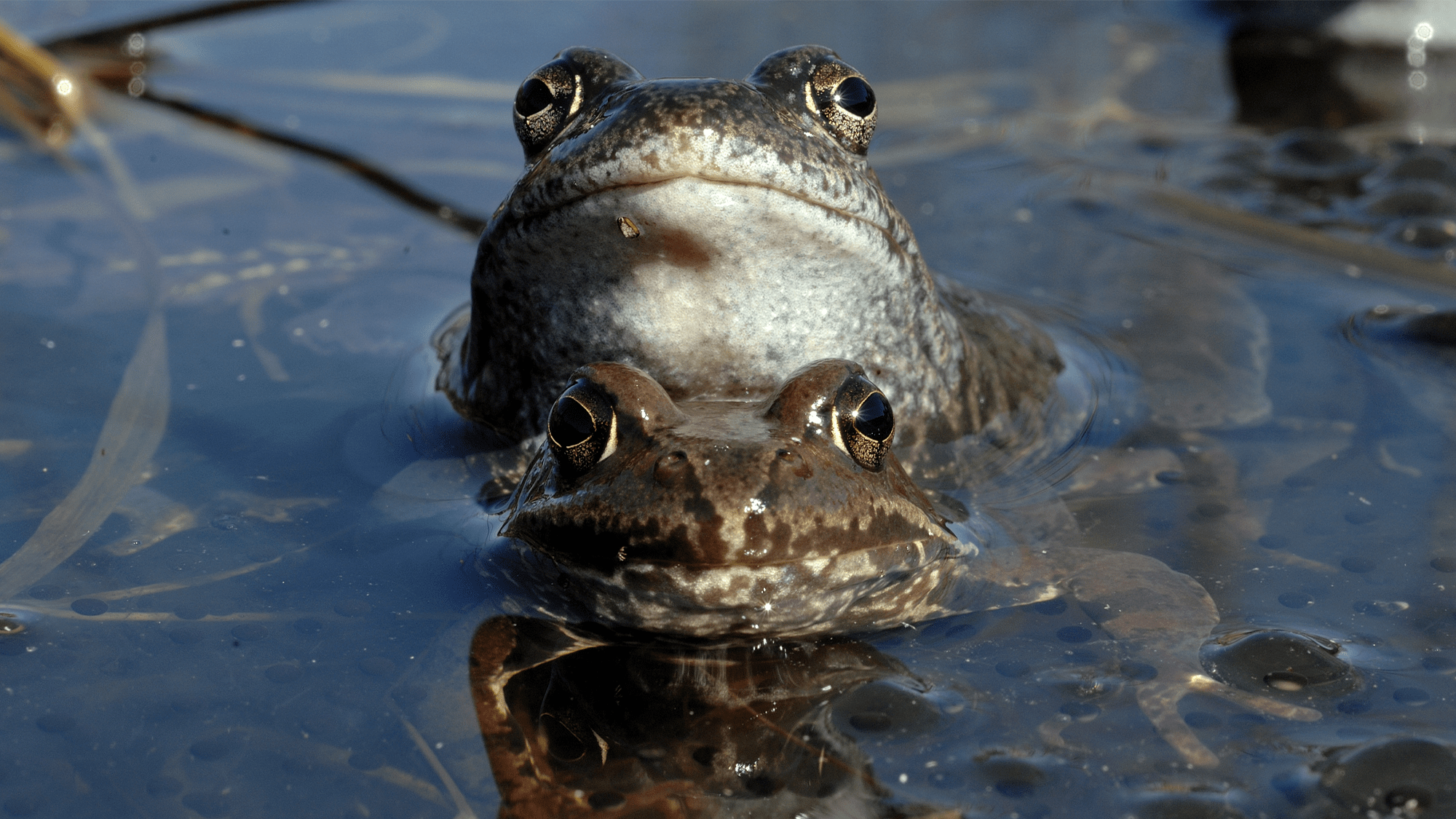

To avoid the amphibian pile-up that often comes with mating, some female frogs take drastic measures. According to research published October 11 in the journal Royal Society Open Science, female European common frogs will lay completely still and play dead to fend off potential mates.
[Related: Check out some of the weirdest warty frogs in North America.]
In the study, a team from the Natural History Museum of Berlin in Germany placed a male frog in a box with one large female and one small female and recorded the mating behavior. They observed 54 instances of female frogs being clutched by the males and 83 percent of females tried rotating their body when gripped. About 48 percent of clasped females emitted “release calls” like squeaks and grunts and all of these vocal frogs rotated their bodies.
Thirty-three percent of the frogs clasped by male expressed tonic immobility. This is when a frog stiffens its outstretched arms and legs to appear dead. The immobility tended to occur alongside both rotating and calling. Smaller females more frequently used all three tactics together than the bigger frogs.
Interestingly, this unusual behavior had actually been seen centuries before. “I found a book written in 1758 by Rösel von Rosenhoff describing this behavior, which was never mentioned again,” study co-author Carolin Dittrich told The Guardian. “It was previously thought that females were unable to choose or defend themselves against this male coercion. Females in these dense breeding aggregations are not passive as previously thought.”
The team acknowledges that this behavior could also be a way to test a male’s strength and endurance, as those traits could boost their survival chances. They also point out that a larger sample size is needed to see if smaller females are more successful at escaping.
This playing tactic is also used by other animals as a way to avoid being eaten.
The phrase “playing possum” refers to a tactic deployed by the North American opossum found in the United States and Canada. When this marsupial is threatened by a predator, it will throw itself onto its back, bare its teeth, drool, and excrete a very bad smelling liquid out of its anal glands to get out of danger.
North American wood ducks and colorful mallard ducks can immediately collapse when confronted with predators. In a 1975 experiment, 29 out of 50 different wild ducks played dead when they were exposed to captive red foxes. The ducks would also stay still long enough to be brought back to the fox’s den and wait until later to escape. The veteran foxes quickly learned that they needed to quickly deal a fatal injury to ducks that appeared dead.
[Related: Why some tiny frogs have tarantulas as bodyguards.]
Despite being apex predators, multiple species of sharks and rays also exhibit tonic immobility. Lemon sharks will turn onto their back and exhibit labored breathing and an occasional tremor when facing danger. Zebra sharks will also do this and will even stay immobile when being transported.
Male nuptial gift-giving spiders will display a different death feigning behavior called thanatosis. It’s part of a courtship ritual that begins before mating with potentially cannibalistic female spiders. In a 2006 experiment, the males would “drop dead” when a female approached with interest. When entering thanatosis, the males would collapse and remain completely still, while retaining a gift of prey the male has already caught and wrapped in silk The male only cautiously begins to move when the female ate the gifts and initiated copulation.
